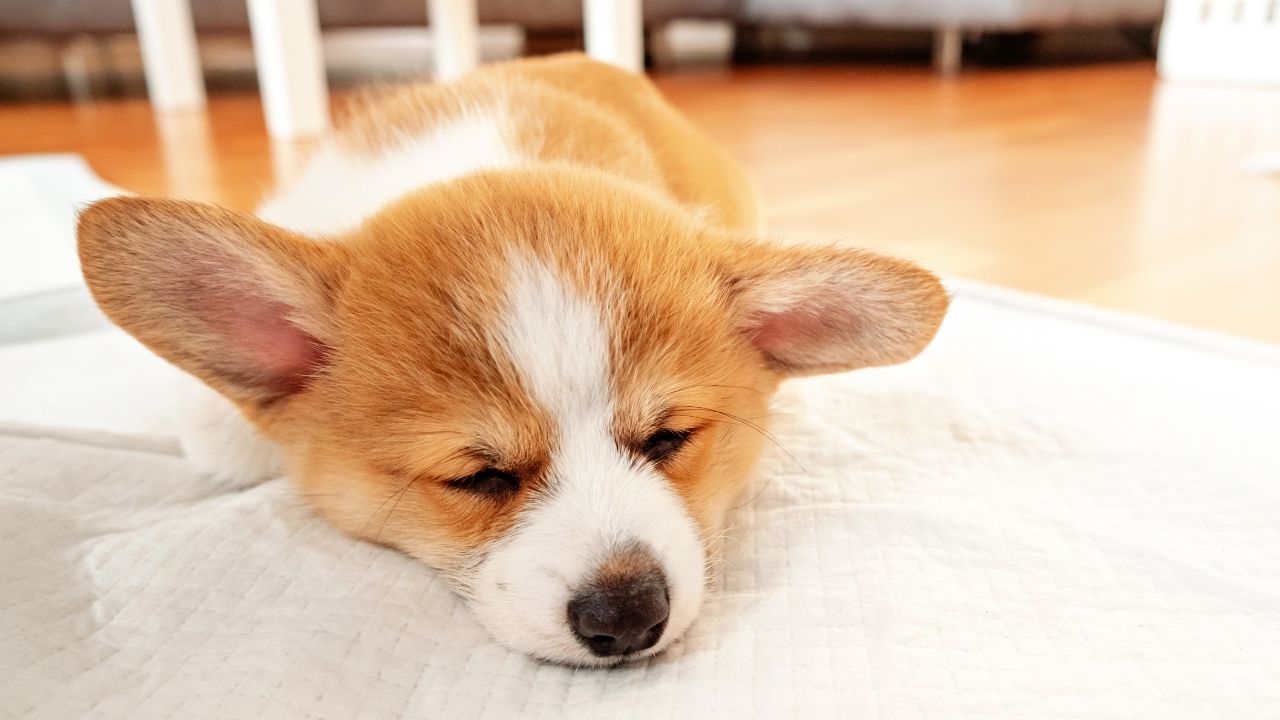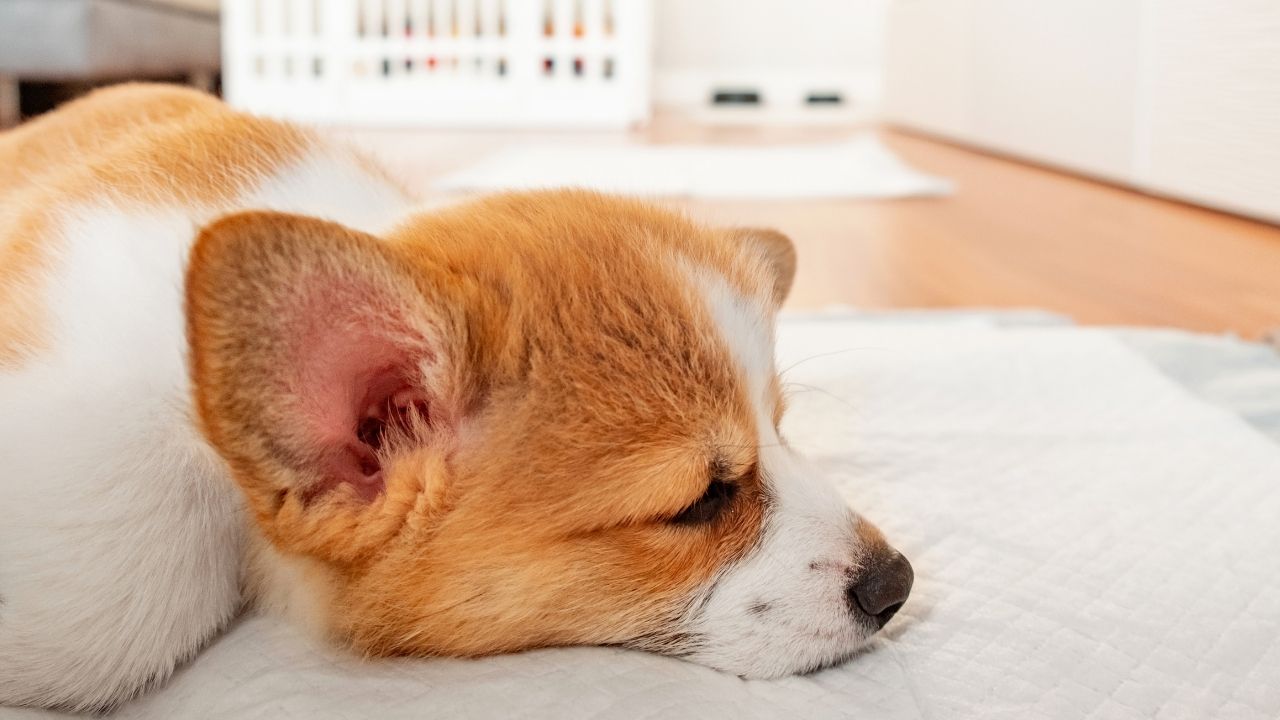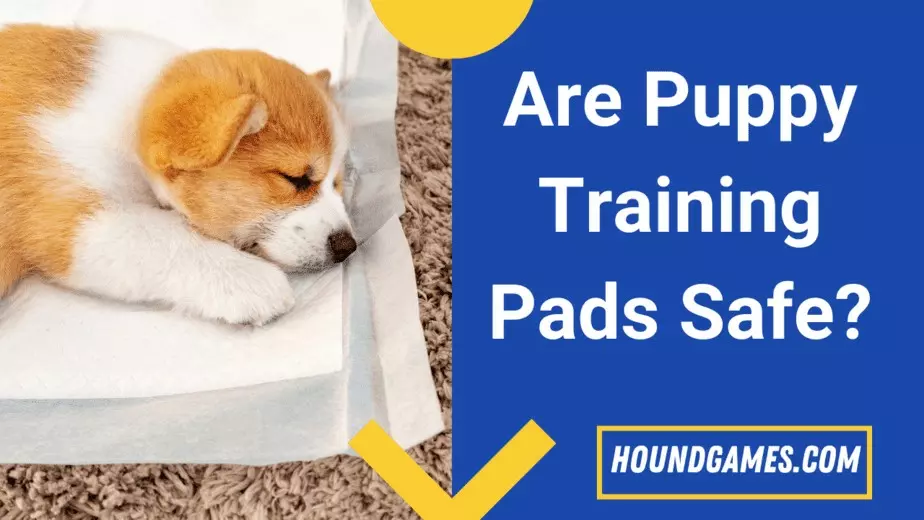Puppy pads can be a great help when potty training your pups. Some dog owners choose to use puppy pads as a long-term solution. Regardless of how you use them, it’s important to ask whether they are safe to use and what chemicals are in the puppy pads?
What chemicals do puppy pads contain?
The main active ingredient in puppy pads is superabsorbent sodium polyacrylate polymeric hydrogel. These are made from acrylic acid blended with sodium hydroxide. These compounds are non-toxic but do present a threat if ingested.
Superabsorbent gels like sodium polyacrylate polymeric hydrogels are good at absorbing moisture. So much so that they would quickly dehydrate the contents of your pet’s digestive system, which is usually fatal.
In addition to the hydrogels, puppy pads sometimes contain synthetic pheromones intended to lure your puppy into making use of the puppy pad.

What are puppy training pads made of?
There are several different puppy pads on the market, but most of them vary on the same design. A couple of layers of gauze cover absorbent hydrogels, while a plastic layer seals the bottom of the pad.
Would you like to read our post, Petco vs PetSmart: Which is Better?
Are puppy pads bad for training?
Yes, puppy pads can be bad for training. They are a convenient but temporary solution. Having puppy pads around the house is not the most sanitary solution.
As your pup grows, so does this problem. As you essentially have to retrain them to only go outside of the house. Puppy pads are a better solution for tiny dogs who may not have the bladder size to wait very long, or for apartment situations where puppies or small dogs don’t have easy access to the outside.
You may be interested in reading this: When is a Puppy’s Bladder Fully Developed?
Puppy pads are also an expensive alternative to regular potty training. Furthermore, it doesn’t help that many dogs never quite catch on and tend instead to rip the pads to shreds.
Perhaps the biggest problem with using puppy pads is that they teach your dog to pee in your house. Any pet parent who has retrained a dog that used to pee inside the home will tell you that it is much easier to avoid the problem altogether.
If your puppy won’t poop outside, you might be interested in reading this: Puppy Won’t Poop Outside: Here’s What to Do

Are our puppy pads safe for humans?
Puppy pads are not toxic to humans. They are a variation on a product originally designed for humans. That said, you should not use them on babies. In addition, they are not any more eco-friendly than regular diapers.
Puppy pads can’t absorb the same amount of liquid as baby diapers. That means that even if you do use them, they can be impractical, due to how often they need to be replaced. This is especially true for larger puppies.
Is the inside of puppy pads toxic?
No, the inside of puppy pads is not toxic. However, that does not mean that they are safe for consumption. Toxic chemicals are chemicals that directly negatively impact the healthy function of the body.
The inside of puppy pads contains superabsorbent gels. They do not have a direct impact on your health. The danger with these gels is functional rather than chemical. Sodium polyacrylate polymeric hydrogels are extremely good at absorbing moisture.
They are so good at it that they could easily absorb moisture from organs right through tissue in two different processes. The primary and better-understood process is called diffusion.
In diffusion, a substance gets drawn out of a cell. It happens because there is far less outside the cell than inside. Hydrogels create this moisture ‘vacuum’ that forces your body to give up its moisture.
While this is very different from toxicity, it may be worse and far harder to treat.
You might also be interested in how long puppy play pads last and for that you will want to read: How Long Do Puppy Training Pads Last? (Answered)
Final Word
Puppy pads are not toxic. However, that does not mean that you or your pets can safely consume them. The hydrogels inside puppy pads are so absorbent that they could essentially dry out an animal’s digestive tract and nearby organs. Therefore, it would be a worse prognosis than most toxins.
Puppy pads pose no risk to humans or babies, but they are impractical for us to use. However, the absorbency of hydrogels means that you can use puppy pads for many unintended purposes where moisture is a problem.
Have you read our post, Dog is Pooping Jelly: (What To Do)
Sources
Toxicity associated with ingestion of a polyacrylic acid hydrogel dog pad (nih.gov)




